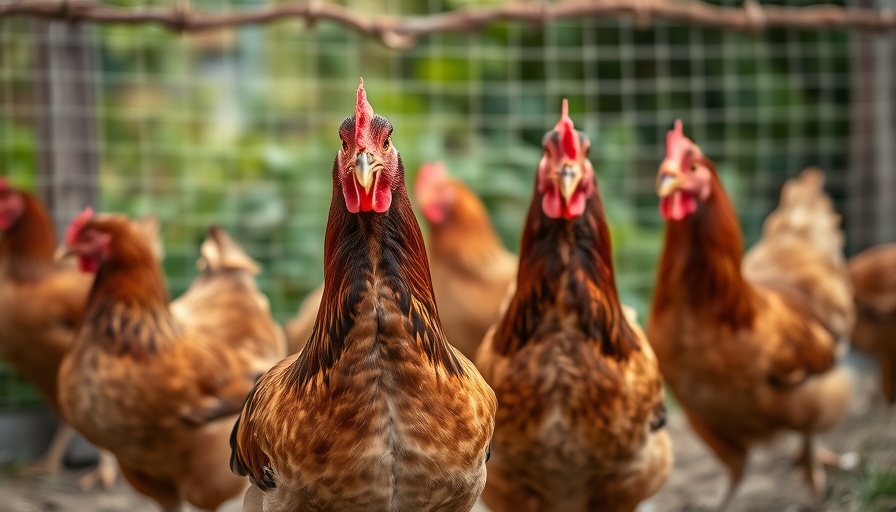
Urgent Response Required: H5N1 Avian Influenza in Odisha
The recent detection of H5N1 avian influenza in Odisha's Puri district has raised alarm bells with over 6,700 birds culled following strict government protocols. As health officials rapidly respond to contain the outbreak, the implications for both local poultry farmers and public health must be fully understood.
Why Mass Culling is Necessary
Confronting an outbreak of H5N1 is crucial as the virus not only threatens bird populations but poses a potential risk to human health if the virus were to mutate to a strain easily transmissible between people. The mass culling of birds—mandatory under the standard operating procedures set by the government—is a preventive measure aimed at stopping the spread of the virus. According to Sarat Kumar Behera, Chief District Veterinary Officer (CDVO), rapid response teams have been deployed to monitor the situation closely.
The Importance of Quick Action
The state government's robust containment plan, which includes restricting the movement of birds to a 1-km radius of the infection zone, underscores the importance of acting quickly in the face of potential health crises. In addition to culling, health teams are actively collecting samples from surrounding areas to assess the outbreak's spread.
Community Awareness and Precautions
For local farmers and residents, awareness is key. Understanding the risks associated with bird flu outbreaks not only informs better management practices but also encourages vigilance in recognizing symptoms in birds. Farmers should monitor their flocks closely, as early detection can be crucial in mitigating losses and collaborating with health officials for appropriate interventions.
Final Thoughts: The Path Forward
This incident serves as an opportunity for communities to come together and strengthen their poultry biosecurity measures. The experience in Odisha can serve as a learning tool for other regions vulnerable to such outbreaks. Enhanced awareness, quick response strategies, and community cooperation are essential in preventing future avian influenza incidents.
 Add Row
Add Row  Add
Add 




Write A Comment